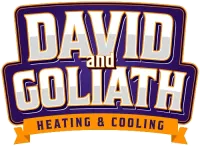When the chill of winter sets in, our homes become sanctuaries of warmth, thanks in no small part to our trusty furnaces. At the heart of your furnace, the heat exchanger plays a crucial role in heating your home safely and efficiently. However, like any component, it can succumb to wear and tear over time, leading to cracks. A cracked heat exchanger is not just a mechanical failure; it poses significant risks to your home’s safety, including the potential for carbon monoxide leaks. So, how can you tell if your heat exchanger is cracked, and what should you do about it?
Signs of a Cracked Heat Exchanger
Unusual Sounds: If you hear strange noises like rattling or banging coming from your furnace, it could indicate a crack. As the metal heats and cools, the change in dimensions can cause movement, leading to these noises.
Soot Inside the Furnace: The presence of soot indicates incomplete combustion, often caused by a disrupted airflow that a crack could cause.
Water Around the Furnace: While a water leak could be due to various reasons, combined with other signs, it might suggest a crack in the heat exchanger.
Yellow Burner Flame: Your furnace’s flame should be blue. A yellow or flickering flame is a sign of improper combustion, which could be due to a cracked heat exchanger.
Carbon Monoxide Detector Alarms: Perhaps the most critical sign is your carbon monoxide detector going off. Since carbon monoxide is colorless and odorless, your detector is a crucial line of defense in identifying leaks.
The Risks of a Cracked Heat Exchanger
A crack in the heat exchanger can allow harmful gases, including carbon monoxide, to escape into your home. Carbon monoxide poisoning can lead to severe health issues or even be fatal in high concentrations. Moreover, an inefficient furnace can hike up your energy bills as it struggles to maintain the desired temperature.
What Should You Do?
Turn Off the Furnace: If you suspect a cracked heat exchanger, the first step is to turn off your furnace to prevent any potential gas leaks.
Ventilate Your Home: Open windows and doors to allow fresh air to circulate and dilute any potentially harmful gases.
Call a Professional: This is not a DIY job. A qualified HVAC technician can conduct a thorough inspection using specialized tools to confirm if there’s a crack.
Consider Replacement: Depending on the age and condition of your furnace, and the extent of the damage, replacing the heat exchanger or the entire furnace might be more cost-effective than a repair.
Prevention Tips
Regular maintenance is key to extending the life of your furnace and preventing issues like a cracked heat exchanger. Annual inspections by a professional can catch early signs of wear and tear, ensuring your furnace operates safely and efficiently. Additionally, ensuring your home has proper ventilation and that your carbon monoxide detectors are in working order are essential safety measures.
A cracked heat exchanger is a serious issue that requires immediate attention. By being vigilant for the signs of a crack and acting swiftly if you suspect a problem, you can ensure the safety and warmth of your home throughout the winter months. Remember, when it comes to gas appliances, it’s always better to err on the side of caution and seek professional advice. If you live in the Dallas, Gastonia, and surrounding areas of NC and you need professional service with you gas furnace, give David & Goliath HVAC a call.


